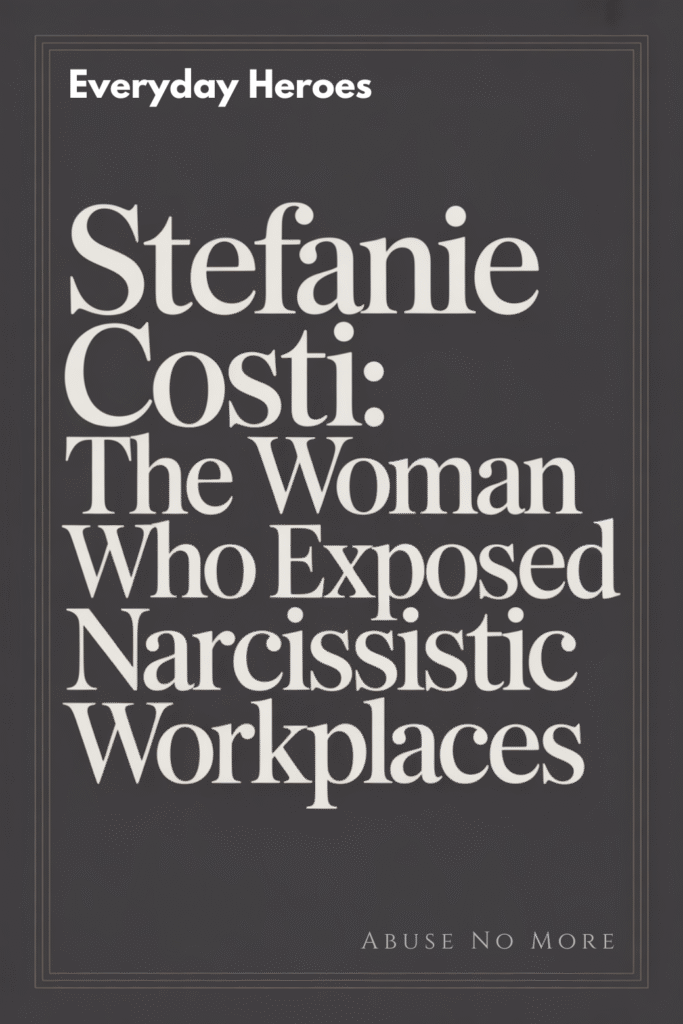Now Reading: The Burnout Is Real: How Narcissistic Work Environments Erode Mental Health
- 01
The Burnout Is Real: How Narcissistic Work Environments Erode Mental Health

The Burnout Is Real: How Narcissistic Work Environments Erode Mental Health
It’s Not the Workload — It’s the Whiplash
You’re doing everything “right.”
You show up early. You stay late. You crush deadlines. You smile through meetings.
But somehow, you’re still drowning.
Your chest is tight before meetings.
You overthink every Slack message.
You’re constantly anxious, exhausted, or emotionally numb.
Let’s be real — you’re not just “burned out.”
You’re in a narcissistic workplace, and your nervous system is waving a red flag.
Let’s use the IMC Method™ to understand what’s happening, protect your mind, and take back control before the job takes you out and learn How Narcissistic Work Environments Erode Mental Health.
🔥 What Makes Narcissistic Burnout Different
Typical burnout = workload stress.
Narcissistic burnout = psychological erosion.
You’re not just working hard. You’re working under:
- Constant emotional manipulation
- Moving goalposts
- Praise-then-punish cycles
- Fear of being smeared or sabotaged
- A culture that gaslights your reality and calls it “feedback”
📎 Real Talk:
You’re not tired because you’re lazy.
You’re tired because you’re in defense mode 24/7, and the victim of a narcissistic work environment.
🧪 The Symptoms — And Why They’re Not “Just in Your Head”
Chronic narcissistic exposure at work can trigger trauma symptoms, including:
- Hypervigilance — constantly bracing for the next attack
- Brain fog — memory lapses, inability to focus
- Irritability or numbness — emotional shutdown
- Insomnia — your brain never powers down
- Digestive issues, tension headaches, or chronic fatigue
📎 Quote from a survivor:
“I used to love my work. Now I can barely open my laptop without crying. I started wondering if I was broken — turns out, I was just overexposed to manipulation.”
🎯 IMC STEP 1: IDENTIFY
What’s causing this mental and emotional drain?
Start mapping the patterns. Burnout doesn’t happen in a vacuum.
Look for:
- A boss who praises you one week and ghosts you the next
- Coworkers who triangulate, gossip, or sabotage
- Gaslighting feedback like “You’re just not a culture fit”
- Emotional labor expectations — but no emotional safety
- Unspoken rules that reward silence over truth
Ask yourself:
- When did the burnout start?
- Who or what changed around that time?
- Does the idea of taking PTO make you more anxious than excited?
📎 Example:
“I realized I wasn’t afraid of the workload. I was afraid of how my boss would twist whatever I did — even on vacation. I couldn’t rest.”
🧯 IMC STEP 2: MINIMIZE
How do I stop the burnout cycle from boiling over?
Time to move from survival mode into containment. That means less reacting, more conserving — and reclaiming your right to rest.
Practical burnout shields:
- Clear work hours — and hold them. Even if others don’t.
- Create “emotional exits.” Step away after meetings. Close Slack. Walk. Breathe.
- Default to written comms. It slows down the gaslighting and gives you clarity.
- Reduce digital clutter. Turn off notifications. Block calendar time for deep work.
- Stop over-functioning. Their chaos is not your job to manage.
- Use scripts to disengage.
- “Let’s circle back during office hours.”
- “I’m not available to discuss this now — I’ll follow up tomorrow.”
📎 Example:
“I started blocking out 30 minutes after every 1:1 to regulate. Even just journaling what really happened helped me stop spiraling.”
🛡️ IMC STEP 3: CONTROL
How do I take back my energy — and rebuild from the inside out?
Burnout doesn’t just go away with bubble baths. You need strategy — and exit routes.
Control moves:
- Rebuild your reality. You’re not weak. You’re surviving sabotage.
- Find support — outside the system. Therapist, coach, peer, community — anywhere safe.
- Name the abuse. Stop minimizing it. Name it. Narcissistic workplace trauma is real.
- Start your exit plan. Even if it’s long-term. Hope is fuel.
- Reclaim your body. Walk. Move. Stretch. Ground. Feel. You are not a brain-on-a-stick.
- Take control of your narrative. You don’t owe them your sanity to prove you’re valuable.
📎 Example:
“I applied to one job a week — just to remind myself there was life outside this mess. Eventually, I landed one. Burnout didn’t disappear overnight — but clarity came rushing back.”
🚫 Burnout Lies Narcissists Want You to Believe
| The Lie | The Truth |
|---|---|
| “You just can’t handle pressure.” | You’re handling more than anyone realizes — including psychological warfare. |
| “Everyone feels this way.” | Nope. Healthy workplaces exist. Dysfunction shouldn’t feel familiar. |
| “You’re overreacting.” | That’s gaslighting. Burnout is your body sounding the alarm. |
| “You need to be more positive.” | Toxic positivity won’t fix emotional abuse. |
💡 Nervous System First Aid Kit
These tiny rituals help repair burnout damage in real time:
- 4-7-8 breathing
- Ice on wrists or neck (calms stress response)
- Grounding objects at your desk (stone, crystal, affirmation card)
- “Name 5 things I see, 4 I feel, 3 I hear…”
- 10-minute walks after stressful interactions
- Body check-in: “Where am I holding tension?”
📎 Mini Script:
“My worth doesn’t depend on their chaos. I’m safe to rest. I’m allowed to unplug.”
🧠 IMC Framework Recap
| Phase | Goal | Action |
|---|---|---|
| IDENTIFY | Spot burnout’s emotional source | Trace patterns, people, and pressure |
| MINIMIZE | Contain the damage | Set hours, regulate after triggers, unplug |
| CONTROL | Reclaim peace and agency | Support, planning, reframe, exit path |
💥 Final Word
You didn’t “fail.”
You didn’t “lose your edge.”
You’ve been overexposed to a system built on manipulation — and under-supported by one that pretends it’s normal.
But now? You’ve got the lens.
The method.
The boundary.
The receipts.
Burnout in a narcissistic workplace isn’t a weakness.
It’s a signal — that you’re too strong to keep shrinking.















